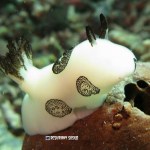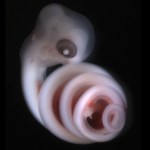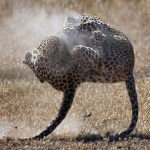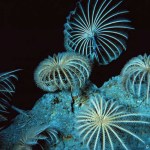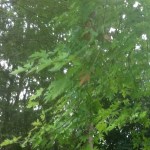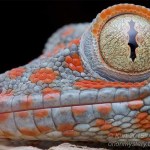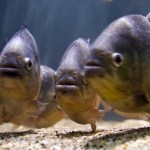Organisms
The whole dang conference is available in one giant 8 hour video, and here it is.
That's kind of indigestibly huge, so I've been going at it in small pieces. I started with Gabrielle Winters at about 5 hours in, with Cephalopod Neurogenomics: Insights into the Evolution of Complex Brains, just because that's what I'm most interested in. It's a conference for general audiences, so it starts off with a good basic overview of cephalopods and neuroscience and molecular biology, and then, just as it starts getting interesting, the sound cuts out at 15 minutes…and doesn't resume for another 15…
Knobby Argonaut, Argonauta nodosa
Also, what's Brian Switek doing, writing about cephalopods? He's supposed to be writing about dinosaurs
!
But first impressions can be deceiving. In truth, as I later learned from Klug, the paper nautilus is not a close relative of today’s pearly nautilus, nor is it an echo of the long-lost ammonoids. The creature that had ensnared my mind is totally different.
The argonaut is an octopus, and its prehistoric look is created by the way the squishy creature reproduces. The “shell,” Klug says, “is actually an egg case secreted by two specialized arms,” and…
Sanity-saving tip: never visualize a nautilus from the perspective of its prey.
Fact Zoo
Pacific striped octopuses like to get up close and personal when intimate. Can you blame them?
Oooh, cephaloporny.
I stared at this for a while, trying to sort out what was what, and my mind began to slip into madness, so I figured it was perfect for Pharyngula.
Ily Iglesias
This is an octopus eye:
This is an octopus brain:
I have to point this out because the creationist Eric Metaxas said a remarkable thing:
But the octopus isn’t the only such miracle. “Convergent evolution” is all over nature, from powered flight evolving three times to each continent having its own version of the anteater. Think about that. As one delightfully un-self-conscious “Science Today” cover put it, convergent evolution is “nature discover[ing] the same design over and over.” Well, good for nature!
But as Luskin argues, there’s a better explanation for a tentacled mollusk having a…
I took an awful grainy cell phone picture yesterday, one where it's hard to see the subjects for the sun glare. But really, this is amazing:
Fifteen years ago when I started out at UMM, our intro biology course had an exercise where students were given butterfly nets and sent out to capture, tag, and release monarch butterflies. It was relatively easy: you'd find a tree with a swarm -- and I do mean swarm, they'd be covered with butterflies dripping from every branch, and there'd be clouds of them flying about -- and you'd swish that net and catch dozens. Then every year after that, we saw…
Allonautilus scrobiculatus is a rare species that can be distinguishes from the natty Nautilus pompilius by its hairy, slimy shell. That doesn't seem like a distinction to be proud of, but I guess it takes all types to fill an ocean.
Nautilus pompilius (left) swimming next to a rare Allonautilus scrobiculatus (right) off of Ndrova Island in Papua New Guinea.Peter Ward
Here's a scientist talking about the great difficulty of finding whales out on the open ocean. Wouldn't you know it…?
That's excellent comedic timing.
I hear they're also big-hearted.



